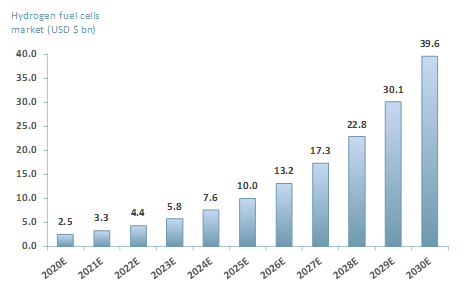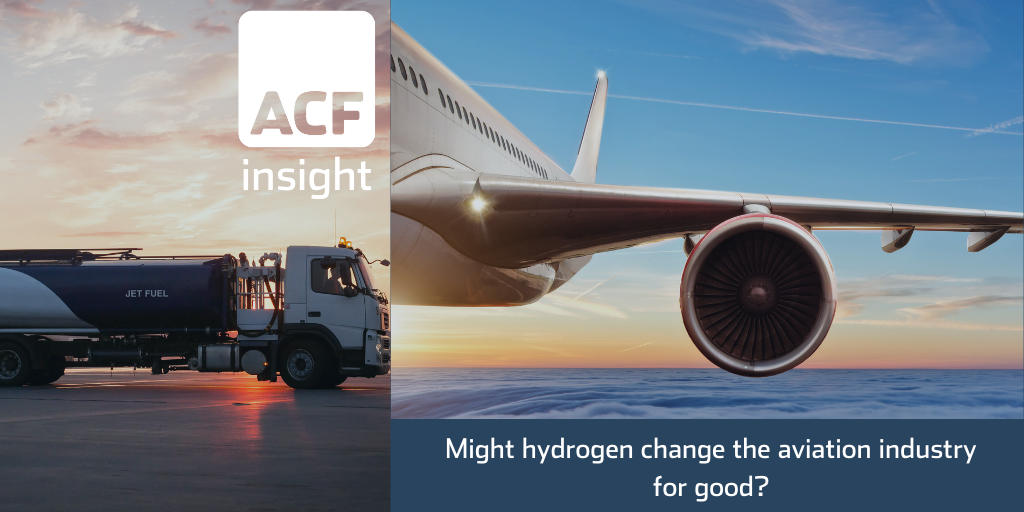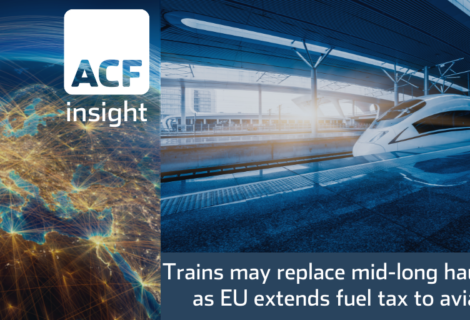Hydrogen fuel changes aviation’s future?
ZeroAvia’s Piper M-class, the first six-seat plane in the world powered by hydrogen (H2) fuel cells, took flight on the 24th of September to mark the completion of the first step towards commercial zero-emission flights.
- ZeroAvia, a private company, is perhaps the leading start-up innovator in decarbonising commercial aviation via hydrogen and electric.
- ZeroAvia is partly funded via the UK Government’s Aerospace Technology Institute (ATI) Programme and is part of the UK Government’s Jet Zero Council.
- In June, ZeroAvia’s other prototype aircraft completed the UK’s first ever commercial-scale battery-electric flight. The next targeted achievement is a 250 mile zero-emission flight by the end of 2021.
- Airbus (AIR.PA), a giant aerospace innovator, is positive about hydrogen as an aero fuel whilst recognising certain limitations. H2 drawbacks include extra weight from fuel tanks that are four times larger than current commercial aviation tanks, additional space to accommodate the tanks and higher costs to passengers.
- Airbus believes – “hydrogen has the potential to halve aircraft emissions”.
- According to a McKinsey report, hydrogen could end up being used in 40% of all aircraft by 2050.
- On the one hand it is costly to produce hydrogen, but on the other hand hydrogen can be produced from intermittent energy sources (i.e. renewables), a more sustainable and environmentally friendly production process.
- As a result of continued environmental concerns highlighted by the clear skies of the 2020 pandemic, there is increasing interest in the renewables market. The hydrogen fuel cells market is a direct beneficiary.
- The global renewable energy market is expected to reach $2,152.9bn in 2025 up from $1,469bn in 2017, a 47% increase (Allied Market Research).
- Based on a CAGR of 31.7%, we forecast that the hydrogen fuel cells market will reach $39.6bn in 2030, up from $2.5bn in 2020 (refer to Exhibit 1 below).
Exhibit 1 – Global hydrogen fuel cells market, 2020-2030
 Sources: ACF Equity Research; MarketWatch.
Sources: ACF Equity Research; MarketWatch.
The transition to hydrogen fuel cells in the aviation industry represents an important step towards slowing down climate change and potentially transforming the face of the aviation industry as we know it.
Hydrogen’s ability to act as a ‘battery’ storage medium for intermittent renewable energy production is another of its overall economic attractions. The storage capability of H2 suggests that it has high volume production characteristics in a new world of renewable energy.
We suspect that within 10 years, instead of large aeroplane fleets and huge airports the industry will divert to an increased number of boutique regional airports with smaller runways and aircrafts.
The move to a more distributed network of airports would be a reversal of current trends and require a significant structural transition.
This could be a potential cost-effective opportunity for small or medium aviation companies where they could insert themselves into the aviation market and compete against their larger counterparts, possibly even outperforming them.
The increase in regional airports would increase the number of short-haul flights. The overall quantity of flights required to meet pre-covid demand suffered from a supply constriction – the pilot shortage.
Post-covid the tables have turned. Demand for flights has collapsed and so the pilot shortage is temporarily no longer a constraint.
Nevertheless, in order to meet future expected continued growth in flight demand, some airlines are implementing their own pilot programs. These airlines are targeting young people looking for an exhilarating career.
With advances in flying technology and more shorter flights, we can envisage passenger plane crews reduced to one pilot rather than two.
The decrease in the number of pilots will, in a virtuous circle, make short haul programmes more profitable and so more attractive to airlines.
In addition, Covid has placed the entire transport industry under pressure due to social distancing restrictions. If it is axiomatic that Covid-19 is here to stay, in one form or another. The “rule of 6” could perhaps be accommodated profitably on these hydrogen powered reduced capacity aircraft.
In turn, flights may become less of a super-spreader fear, GHGs from the airline industry would fall and the impact on the environment could be reduced.
ZeroAvia’s Piper M-class aircraft has demonstrated that the transition to hydrogen fuel cells is possible. ZeroAvia is signalling market entry by 2050. In the meantime, there is an increased opportunity for R&D programmes related to hydrogen fuel safety in flying.
A hydrogen fuelled aircraft and commercial flights market presents a big-break opportunity for small and mid-cap companies and entrepreneurs and a potentially attractive opportunity for investors.
Author: Anda Onu – Anda is part of ACF’s Sales & Strategy team. See Anda’s profile here
















